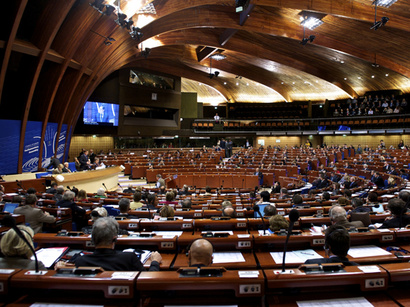ID :
272614
Mon, 01/28/2013 - 15:21
Auther :
Shortlink :
https://www.oananews.org//node/272614
The shortlink copeid
European Parliament members are concerned about uncontrolled nuclear zones in Nagorno-Karabakh

Azerbaijan, Baku, Jan. 28 / Trend, M. Aliyev /
Members of the "Green" group of the European Parliament, Bart Stace (Belgium) and Ulrike Lunachek (Austria) sent a request to the European Commission on "Nuclear Security in the South Caucasus," the European Parliament informed on Monday.
Structure members are reminded that the Metsamor nuclear power plant, located in 30 km from Yerevan is the last plant of the old Soviet model (excluding one located in Russia) that uses high-pressure water reactors; the plant is from 1960. Most of the plant is located in a seismic zone.
The plant was closed in 1988 after an earthquake measuring 6.9 on the Richter Scale occurred 100 kilometers from the nuclear plant. MPs stated that one of the plant's reactors was re-launched following the occupation of Nagorno-Karabakh and its surrounding regions.
Members of the European Parliment draw attention to the existence of uncontrolled nuclear zones in Nagorno-Karabakh and the seven surrounding regions occupied by Armenia and point out that this issue is of particular concern.
"The existence of uncontrolled nuclear zones in Azerbaijan's occupied territories creates a real nuclear threat to the whole Caucasus," MEPs noted.
Deputies are recanting calls to close Metsamor nuclear power plant by 2016 and have also questioned the European Commission on what practical steps will be taken to prevent the possibility of another Fukushima on Europe's border and the mitigation of this nuclear danger.
Metsamor (Armenian) was built in 1970. Although it was closed following the devastating 1988 earthquake in Spitak, in 1995, station operations were restored and a second reactor was launched despite international protests.
According to environmentalists and scientists from all over the region, seismic activity in the area renders Metsamor nuclear plant an extreme risk even if a new generation of reactor were to be built. Given the large number of minor earthquakes in the last ten years in the area, as well as the intensification of the seismic processes, scientists project that in the event of a major accident at Metsamor, not only Armenia, but also the countries of the South Caucasus and the Middle East will be severely affected.
The conflict between the two South Caucasus countries began in 1988 when Armenia made territorial claims against Azerbaijan. Armenian armed forces have occupied 20 per cent of Azerbaijan since 1992, including the Nagorno-Karabakh region and seven surrounding districts.
Azerbaijan and Armenia signed a ceasefire agreement in 1994. The co-chairs of the OSCE Minsk Group - Russia, France and the U.S. - are currently holding peace negotiations.
Armenia has not yet implemented the U.N. Security Council's four resolutions on the liberation of the Nagorno-Karabakh and the surrounding regions.
Do you have any feedback? Contact our journalist at agency@trend.az





